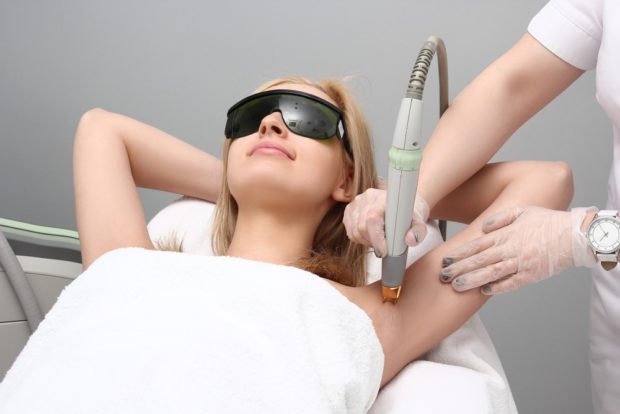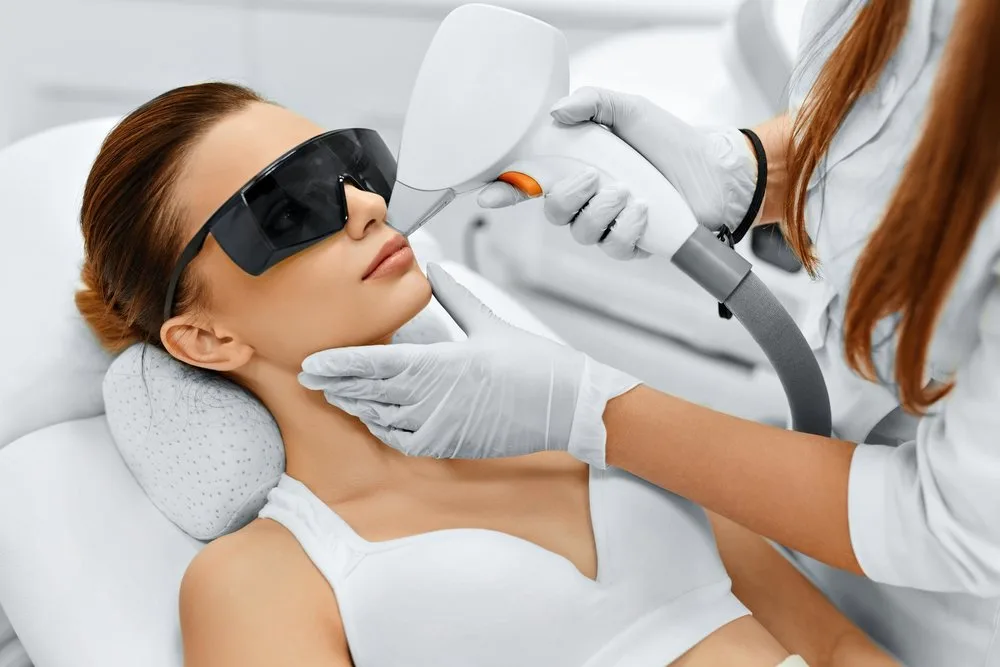How effective is laser hair removal when it comes to stubborn unwanted hair? Johane du Toit tried it out.
Full disclosure: I come from some pretty hairy stock. And while I’m thankful for my thick, glossy curls, lashes, and eyebrows, I’ve always been jealous of that friend who has never even owned a razor. That’s due to the bitter, ongoing war I’ve been waging with the hair on my legs. Because it’s stubborn, thick, and dark like the night. Worse yet, it grows back faster than any hair-removal option on the market.
Any option, that is, except for laser treatments, which I’ve had administered to my underarms and bikini area. Several years later, both of those areas are largely hair-free.
Of course, laser hair removal is the more expensive option. But to date, it’s also the only permanent one. It’s also safe and very effective – if you get it right. Here’s why.
PS. I consulted experts Mazanne van Staden and Violet Schoeman at Laserderm for additional specialist insights.
Which equipment should one use?
A qualified laser therapist will help you to make an informed decision and select the most suitable equipment. Mazanne explained it to me.
“During this consultation, you will be informed on how laser hair removal works, the different types of lasers that are available, and whether your skin is safe to treat on the wavelength that the machine uses.
“We also offer a complimentary test patch to determine the best laser to use, and as a mini sample for you to gauge what your treatment will feel like. Doing it right from the start will save you time and money.”
To make an informed decision, discuss all possible outcomes, benefits, and risks. When choosing a clinic or salon, look at their track record, inquire about patient experiences, and ask to see before and after pictures.
Is it painful?
A sharp or burning sensation may be experienced with each burst of laser, which may cause some discomfort during the treatment. Immediately following the procedure, the treated area will feel warm and appear flushed, as though it has been sunburned. Short-term redness (erythema) or swelling of the treated area is common. There may also be some bruising.
Who are the best candidates for laser hair removal?
Anyone can have laser treatments, says Violet, but patients with dark hair are ideal candidates.
“This allows the laser to focus its light on the pigment within the hair, and doesn’t have pigment within the skin competing for it. In patients with darker skin, however, there are specific lasers that can be used successfully.”

How many treatments are required before you’ll see effective results?
A course of six to eight sessions over an 18-month period is recommended. Some areas with finer hair can take longer and often require maintenance sessions four to six times a year. Certain patients – particularly those with darker skin and/or coarser hair – may require up to 10 or more laser hair-removal sessions to achieve the desired results.
Are home lasers for hair removal a viable option?
There are pros and cons to opting for an at-home laser. Pros: you can do it in the comfort of your home; it is normally pain-free, and some individuals may get permanent hair removal. Cons: far more treatments are required, making it more time-consuming.
“As a firm believer in evolution and technology,” says Mazanne, “I do believe there are some great, reputable home-maintenance devices available on the market, online and in-clinic. As human beings, [however], we like to push the boundaries and go ‘higher’, ‘more’, ‘faster’, ‘more aggressive’, which can have dire consequences, and sometimes cause permanent damage to our skin and pigment in the skin.”
In principle, you can box-dye your hair at home, and some might get a desirable outcome. But if you want results, leave it to the professionals, who have the training, expertise, skill, and technology for better, faster, and more effective outcomes, with little to no side effects.”
Which areas of the body respond most favorably to laser hair removal?
According to Violet, if the hair is dark, the underarm, bikini and lower-leg areas can get close to 80% permanent reduction within six to eight sessions. Other areas averaged around a 70% reduction, with more sessions.
What are the current and most prominent innovations in laser hair removal?
“Often referred to as “old technology,” we strongly believe in solid-state lasers [such as] Alexandrite 755nm for fairer skin and 810 nm Diode or 1064 nm Nd: Yag lasers for darker skins,” says Mazanne.
The parameters can be adjusted around spot size, energy, pulse duration, speed, and cooling methods to cover all challenges faced by laser hair removal. Unfortunately, blonde, red, or grey hair is still resistant to laser hair removal, and in these cases, patients are referred to electrolysis or other safe options.
What is the best time of year for laser hair-removal procedures?
Autumn or winter is preferable, as it’s easier to avoid the sun, which can affect the efficacy of your treatment.
“Exposure to the sun, as we know, is always strongly discouraged in dermatology and aesthetics,” says Mazanne, “but we can guide you around timing treatments perfectly for that December glow you aspire to. PS: a tan is a sign that your skin has been injured.”
Apart from permanent hair removal, what other benefits does laser hair removal offer?
Violet explains that laser hair removal can help stimulate tissue growth and increase collagen production. It will bring nutrients and oxygen to the skin, rendering the skin suppler, more youthful, and full of life.
Laser hair removal can also assist with ingrown hairs, old sun damage, and Caesarean or breast-augmentation scars. This is because the skin reacts to the controlled laser light injury to the hair follicle with an increase in oxygen-rich blood, as a protection mechanism against inflammation or damage to the stem cells inside the hair follicle.
“I call this the Cinderella skin effect,” says Mazanne
If you undergo facial laser treatment, what should you do to protect your facial skin?
It’s always advisable to protect the skin’s barrier function with a good moisturizer. In addition, special care should be taken pre-and post-procedure not to expose the treated skin to the sun.

RossHelen/Shutterstock
Other considerations:
- Topical or local anesthesia can be applied to small areas before laser treatments, to reduce discomfort (allergic reactions to topical creams could occur).
- Laser is not recommended on tanned skin or skin that has had recent sun exposure, as blistering and potential scarring may occur. It could also lead to post-inflammatory hypo/hyperpigmentation.
- It’s best to avoid aggressive or chemical exfoliation one to two weeks prior to and following facial laser treatment.
- For the first 24 hours following the treatment, no makeup should be worn. Instead, the skin should be kept well hydrated and protected from sunblock.
- After laser treatment, you shouldn’t wax, thread, or tweeze the area, as this re-stimulates hair growth.





![women [longevity live]](https://longevitylive.com/wp-content/uploads/2020/01/photo-of-women-walking-down-the-street-1116984-100x100.jpg)









